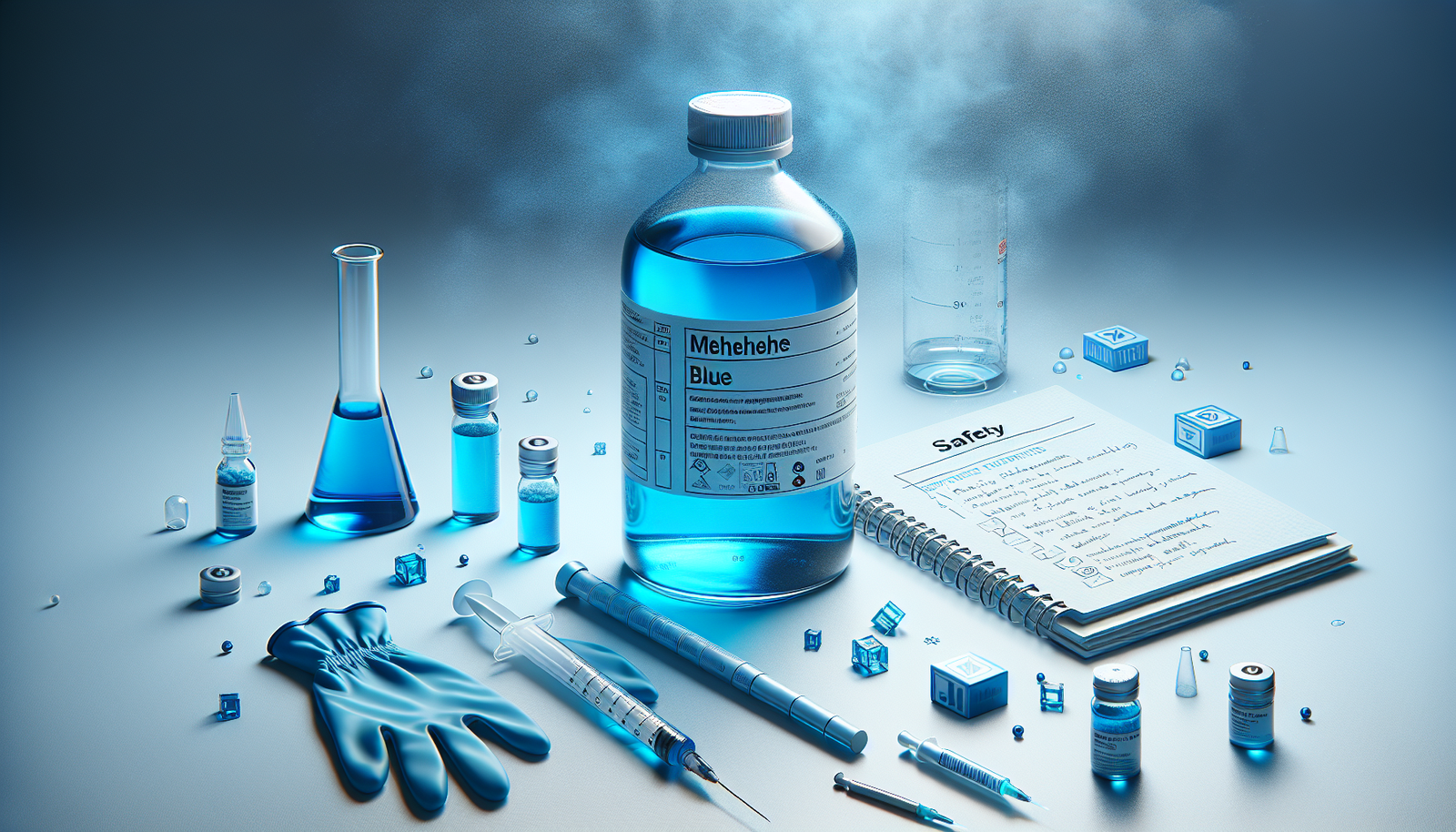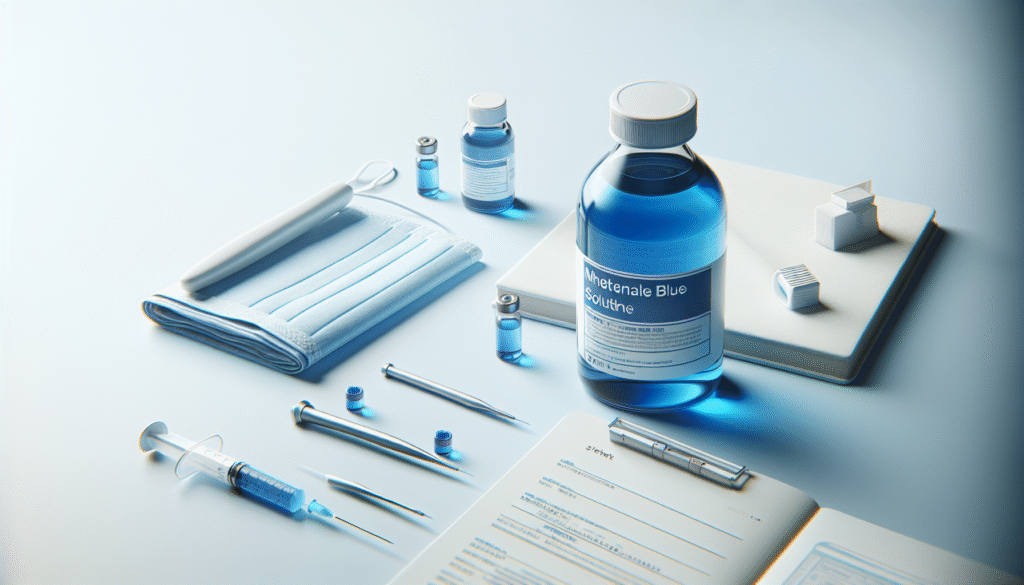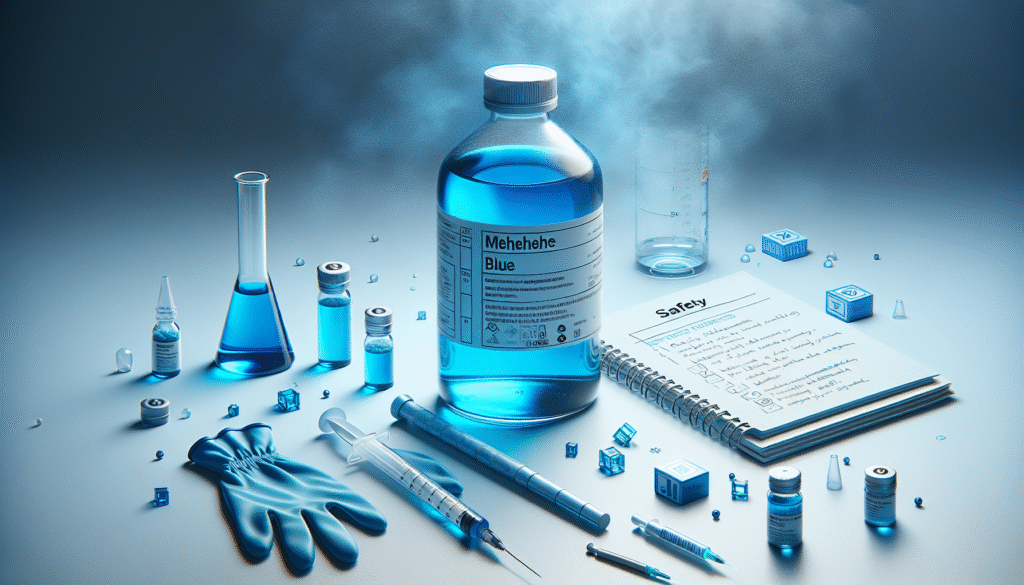
Have you ever considered the implications of using methylene blue and the essential precautions you should take to ensure its safe application? This colorless and versatile compound has gained popularity in various fields, from medical uses to aquarium maintenance. However, as with any chemical agent, understanding the safety protocols around its usage is crucial.
Understanding Methylene Blue
Methylene blue is a synthetic dye that has been utilized for over a century in numerous applications. Originally developed as a dye, it has since found its place in fields such as medicine, biology, and even aquaculture. Its distinctive blue color is not just for aesthetics; it serves important biological functions.
Medical Applications
In medicine, methylene blue is often used as a treatment for methemoglobinemia, a condition where hemoglobin is unable to effectively release oxygen to body tissues. It has also been used in surgeries as a staining agent and has been explored in the treatment of various neurodegenerative disorders and infections. However, its application must be conducted under careful medical supervision.
Non-Medical Uses
Beyond the medical realm, methylene blue finds use in laboratories for staining biological samples, in aquariums to treat fish diseases, and even in some industrial processes. Its adaptability is impressive, but with versatility comes responsibility.
The Importance of Safety
With its broad spectrum of applications, you may assume that methylene blue is completely benign. However, its high concentration and potent properties necessitate cautious handling. Understanding the risks and adhering to safety guidelines can prevent adverse health effects and environmental damage.
Risks Associated with Methylene Blue
Methylene blue can pose several risks. You must be mindful of its potential side effects and toxicity. Commonly reported side effects include:
- Nausea
- Vomiting
- Allergic reactions
- Headaches
Moreover, when misused, it can lead to more severe complications, including hemolytic anemia, especially in individuals with G6PD deficiency.
| Risk Category | Potential Effects |
|---|---|
| Minor Side Effects | Nausea, vomiting, headaches |
| Allergic Reactions | Skin rashes, itching |
| Serious Complications | Hemolytic anemia, toxicity |

Guidelines for Safe Use
Methylene blue’s myriad applications require you to follow specific guidelines to ensure safety. Below are essential tips for handling and utilizing this compound safely.
Consult with Professionals
Before using methylene blue, consult with a healthcare professional or a knowledgeable individual in your field. They can provide guidance specific to your circumstances and direct you on the appropriate dosage and administration methods.
Read the Material Safety Data Sheet (MSDS)
The Material Safety Data Sheet (MSDS) contains vital information regarding methylene blue, including handling instructions, first-aid measures, and toxicity levels. Familiarizing yourself with this document is paramount.
Use Personal Protective Equipment (PPE)
When handling methylene blue, it is essential to wear appropriate personal protective equipment, including:
- Gloves
- Safety goggles
- Lab coats or aprons
Proper attire prevents skin contact and exposure to the eyes, reducing the risk of absorption and irritation.
Proper Dosage and Administration
Methylene blue’s effectiveness is highly reliant on the dosage and method of administration. Improper use can lead to unwanted side effects or diminished therapeutic effects.
Dosage Guidelines
For medical treatments, the prescribed dosage is typically determined by a healthcare provider and is based on the individual’s condition and response to therapy. For general understanding, here are standard dosages:
| Application | Dosage |
|---|---|
| Methemoglobinemia treatment | 1-2 mg/kg IV |
| Laboratory staining | Varies |
| Aquarium treatment | Follow label |
Administration Methods
Methylene blue can be administered through various routes including oral, intravenous (IV), or as a topical application. Each method has specific considerations, so ensure you follow guidelines and instructions relevant to your usage.

Storage and Disposal
Storing and disposing of methylene blue properly is just as crucial as safe usage. Your responsibility extends beyond mere application to include environmental safety.
Storage Guidelines
- Cool, Dry Place: Store methylene blue in a cool, dry area away from direct sunlight.
- Sealed Containers: Ensure that the compound is kept in tightly sealed containers to prevent contamination and spillage.
- Secure Location: Keep methylene blue out of reach of children and untrained individuals.
Disposal Procedures
Disposing of methylene blue requires adherence to environmental protection regulations. It is essential to never pour it down the drain or throw it in regular trash. Instead, follow local hazardous waste disposal protocols.
Special Considerations
Certain populations may require additional precautions when using methylene blue. If you belong to one of these groups, it is vital to seek further consultation.
Pregnant and Nursing Individuals
Pregnant and nursing individuals should exercise extreme caution. Methylene blue can cross the placenta and may be excreted in breast milk. Consult your healthcare provider for alternatives or special monitoring.
Patients with Pre-existing Health Conditions
Individuals with G6PD deficiency or other specific health conditions should avoid methylene blue unless directed by a medical professional. The risk of complications may outweigh the potential benefits.
Methylene Blue in Aquaculture
If you’re involved in aquaculture, understanding the specific applications of methylene blue is critical, particularly in treating fish diseases.
Common Uses in Aquaculture
Methylene blue can treat certain fungal infections and parasites in fish populations. Its efficacy, however, requires careful dosing to minimize toxicity risks to aquatic life.
Treatment Protocols
When utilizing methylene blue in aquaculture, follow these protocols to ensure the safety of both the fish and the environment:
- Dilution: Ensure proper dilution according to fish size and water volume.
- Observation: Monitor fish closely for any adverse reactions during treatment.
- Discontinue Use: If fish show signs of distress, discontinue use immediately.
Conclusion
Navigating the complexities of using methylene blue requires a comprehensive understanding of its properties, potential risks, and safety measures. By seeking professional guidance, adhering to safety protocols, and remaining vigilant about dosage and application methods, you can minimize risks significantly.
Responsible use of methylene blue not only protects your health but also preserves the environment, ensuring that this valuable compound continues to be beneficial across various applications.
By following these essential tips, you place yourself in a position to utilize methylene blue safely and effectively. Always remember that respect for the chemical’s power and adherence to safety guidelines is paramount for optimal outcomes.